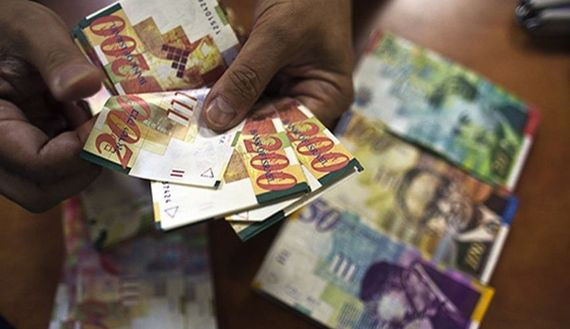Israel's rate cut shock continues to weigh on shekel, now 1.5% off recent two-month high

The Israeli shekel continued to fall as the Bank of Israel cut the benchmark interest rate unexpectedly and mentioned the adverse impact of the appreciating currency on growth.
The USD/ILS jumped to 3.9139 on 23 February after the decision from 3.8546 at Friday's close translating to a 1.5% depreciation in the shekel on the day. The pair continued higher on 25 February and touched as high as 3.9167.
At the levels prior to the rate decision, the shekel was near its strongest against the dollar in two months, and after the rate cut, it is holding near a three-week low.
The Israeli central bank cut the benchmark interest for March by 15 basis points to 0.1% at the review on 23 February and said it was the negative surprise in January inflation data that mainly triggered the rate cut.
"The CPI declined by 0.9% in January, against the background of a decline in energy prices, a scheduled reduction in water prices, and a relatively sharp decline in the housing component," BI said.
"After the January CPI was published, short-term inflation expectations from all sources remained below the target range, and there was a slight decline in longer term expectations toward the midpoint of the target range."
The policymakers were also concerned about the negative impact of shekel appreciation, the statement showed.
"After a depreciation of 10.4% between August and December in the effective exchange rate, there has been an appreciation of 7.6% since December, so that the cumulative depreciation since August has only been 2%. Continued appreciation is liable to weigh on growth in the tradable industries — exports and import substitutes."
"This month, the shekel continued its appreciation, strengthening by 2.6% against the dollar, and by 3.3% in terms of the nominal effective exchange rate," the BI noted.
Israel has been on a policy easing cycle since late 2011 when the rate was 3.25%. At the start of 2014, the rate was 1%, and through the course of the year, it was slashed by 75 basis points.
The shekel had fallen to more than a two-year low of 4.02/dollar in January before appreciating to as strong as 3.8256 this month.
Shekel technical outlook
Technically, the reversal after the BI rate cut shifts the focus to the 4.0 mark again on the upside for the pair, and on the downside, the monthly low comes as a major support.
There are intermediate levels like 3.9520 and 3.9862 on the way up, and 3.8798 on the downside.
On the big picture, 4.0412, 4.0777 and 4.0984 are the bigger resistance levels for the USD/ILS, beyond which the pair will be at its highest in more than five years.
On the way down, the 3.8098-3.7692 region will make a bigger support zone ahead of 3.6384, which is endorsed by the 50-period moving average on the monthly chart.
© Copyright IBTimes 2025. All rights reserved.






















